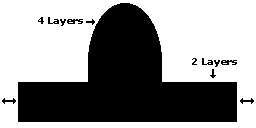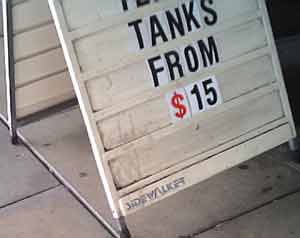Grarh. I hate when people cite the "leave a space in front of your car" theory as meaning that everyone gets where they're going faster. It doesn't. It means everyone gets where they're going slower, but possibly with less wear and tear on their car and sanity. I will accept this latter argument, but not the former. Where would this rant be without examples? Still here, but not as good. So here we go with examples.
My examples will be from a 'science hobbyist' making the declarations, because he explains it better, but the exact same theory has been espoused by a supposedly proper scientist. We begin with traffic waves, where the phenomenon of traffic jams and the basis of the nonsense theory is somewhat explained. This first page doesn't raise my ire.
Then we go on to Traffic Experiments. This is where it gets dubious. Now, this particular page only gets me annoyed a bit, and then soothes me by at least giving a passing nod to the fact that slowing down doesn't make traffic faster. It just redistributes the slowness as, say, 40mph for ten minutes replacing 50mph for eight minutes and two minutes stopped. It's ten minutes either way. But still, he keeps on going on about how you can break the jam by approaching it more slowly. No you can't. You don't even make other people do your smooth 40mph travel for more than a small distance behind you, and you do get to where you're going slower, as does everyone you affect. All the time you're going slower, more people will be merging into your lanes from the various junctions. They'll all be going into the jam that you're approaching, and when you eventually reach it you'll be, say, fifteen car lengths further back than you would have been if you'd been going fast. You may have timed it exactly right so that you don't have to slow down, but if you hadn't you'd be out of the jam by now and ahead of those fifteen cars, ie. you'd be about 300 metres further along the road than you are now.
If the jam is caused by an accident that's been removed, and traffic is fairly light, your smoothing pattern might help remove the jam entirely... But if traffic is light, the jam removes itself in fairly short order anyway, so I doubt even that much effect. What happens if you drive slower is you cause the wave of blockage to move backwards faster than it otherwise would have but if the jam formed from something other than an accident it will re-form for the same reasons (generally too much traffic trying to use the same stretch of road at the same time), and all you'll have done is split the wave of sloth into two smaller jams. Is that better? Nobody will be getting to their destination any faster as a result, except for those people who have merged into the space you left, who get there faster at your expense, and at the expense of all the other people you slowed down with your 'nice' driving.My next thought: if I took several friends along on my experiment, we could have spaced our cars out over many miles. Each of us could have allowed a big blob of anti-traffic to appear, and then the successive impacts of the antitraffic could have completely erased the traffic jam at the Lynnwood exit. No you couldn't, Mr Science Hobbyist. If you propose to make the space between your cars by each slowing down then you'll have you going 5mph slower than the general flow, your friend going 10mph, your next friend going 15mph slower, the next going 20mph slower than the flow, being all but stopped, and getting arrested for obstructing traffic. If, instead, you propose all going at similar lack of speed and entering the traffic at different times then you won't affect the flow much at all, since the wave of slowing that the front person creates will hit the second person before anyone reaches the jam (and the second person's will hit the third, and so on, such that traffic is just as packed as ever - slightly more tightly, even - except immediately behind the first person).
And finally, I was briefly almost convinced by the animated diagrams of this page. Look at them. The right-hand image is actually going faster, and it's because the cars can merge, right? And that's because they're leaving bigger spaces, yes?
No. They were leaving bigger spaces, but then once they merge together they're driving very unsafely, going too fast for the suddenly-small space they have ahead of them. I want to see the extended version of the right-hand diagram, where it's extended the same length again above the current image; towards the top of the animation one of the cars could slam on its brakes or crash into something, then we'd see the reaction times of all those close-packed-going-fast cars behind unable to respond in time, a massive pile-up caused, and the traffic stops entirely since they've now blocked the one available lane with several wrecked cars.
Alternatively, once someone merges into those sensible-spaces, the person who let them in can slow down to regain their previous sensible amount of space, the person behind them can slow down to retain their space, and ta-da, the traffic pattern looks like the left-hand animation in under ten seconds.
SIMPLE, EH? [15:36] [2 comments]
|
|
 What Is This?
What Is This?
